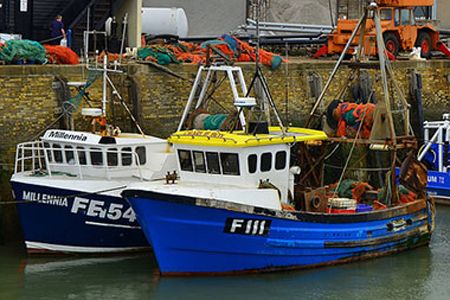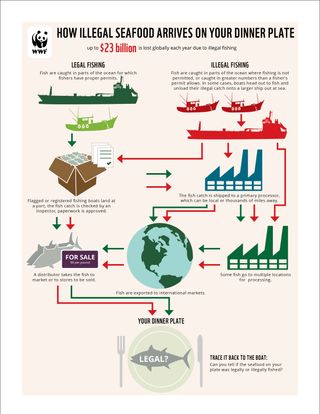
The Threat of Illegal Fishing Is Too Great to Ignore (Op-Ed)

Michele Kuruc is the World Wildlife Fund's (WWF) acting senior vice president for marine conservation. She oversees WWF's work to build healthy and resilient marine ecosystems. She has more than two decades of experience in protecting the world's oceans and combating illegal fishing. She contributed this article to Live Science's Expert Voices: Op-Ed & Insights.
Most people have watched someone play the card game three-card monte at some point in their lives. To win the bet, all the player needs to do is follow one of three cards as the dealer quickly rearranges them on a table. The player — who closely tracks his card as the shady dealer tries to confuse him about which card is which — then picks out the card he thinks is the correct one.
It's a very simple game, but one where the dealer somehow always wins. Why? Because he uses confusion, misdirection and a little sleight of hand to conceal the true movement of the card from the person tracking it.
While three-card monte is something you typically see late at night on city streets, it's happening every day in the planet's oceans . But there, it's not just a card game — it's an international problem called illegal, unreported and unregulated fishing. And the con men that play it are making up to $23 billion each year.
In the same way the dealer hides the movement of his cards, illegal fishermen work to hide the movement of their catch. Illegal product infiltrates the market as seafood moves among multiple fishers, processors, importers and exporters. As the cards are shuffled — as seafood is combined, shipped, processed and shipped again without consistent documentation — regulators, retailers and consumers lose the ability to differentiate legal from illegal product.
While the challenge before law enforcement is immense, the tide is beginning to turn against those profiting from illegal fishing. Government leaders, along with the fishing industry itself, now recognize the true scope and scale of illegal fishing and are actively taking steps to end it.

In fact, last week — in front of ocean leaders from more than 80 nations at the U.S. State Department's Our Ocean conference — U.S. President Barack Obama announced a new initiative designed to coordinate efforts among all federal agencies to close U.S. markets to illegally caught seafood. The administration recognizes that it's past time to break the unintended link between U.S. dollars and illegal fishing, and to provide security to seafood retailers and consumers.
Sign up for the Live Science daily newsletter now
Get the world’s most fascinating discoveries delivered straight to your inbox.

The U.S. government should use this moment to bring together the public and affected stakeholders to design smart regulations that would require bait-to-plate traceability (essentially standardized information about the who, what, where, when and how of fishing) and proof of legality as conditions of import. This transparency will open up the system and make it harder for illegal fish to mix with those responsibly sourced.
Like catching a three-card monte dealer red-handed, ending illegal fishing will not be easy. But the threat it places on marine ecosystems and the livelihoods it supports are too great to ignore.
Follow all of the Expert Voices issues and debates — and become part of the discussion — on Facebook, Twitter and Google +. The views expressed are those of the author and do not necessarily reflect the views of the publisher. This version of the article was originally published on Live Science.












